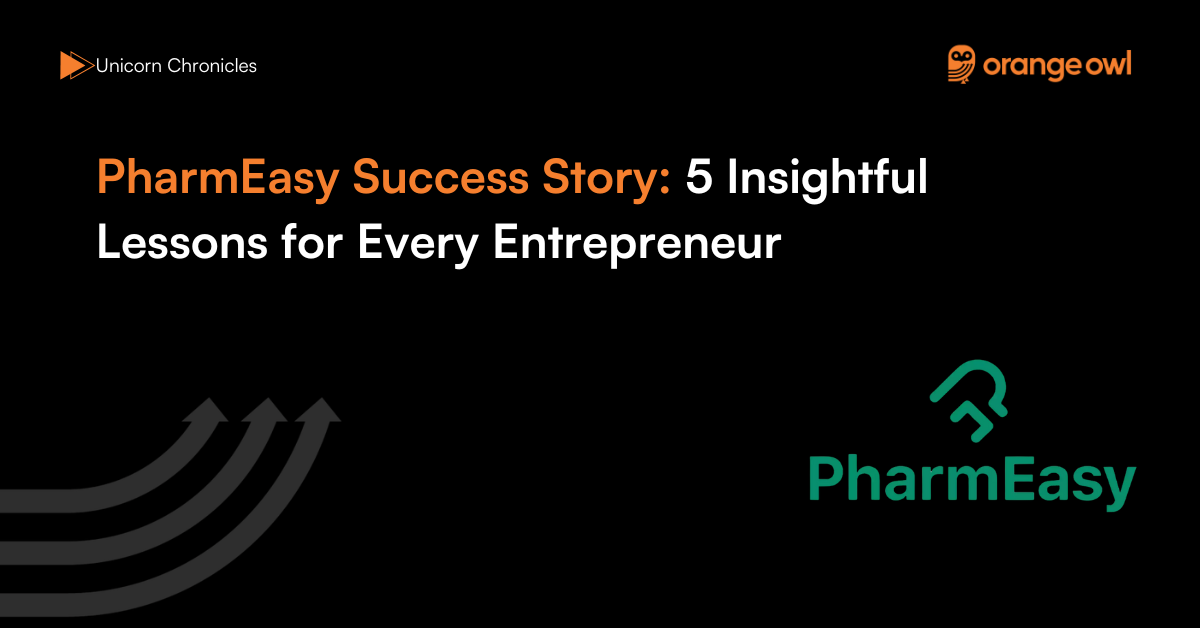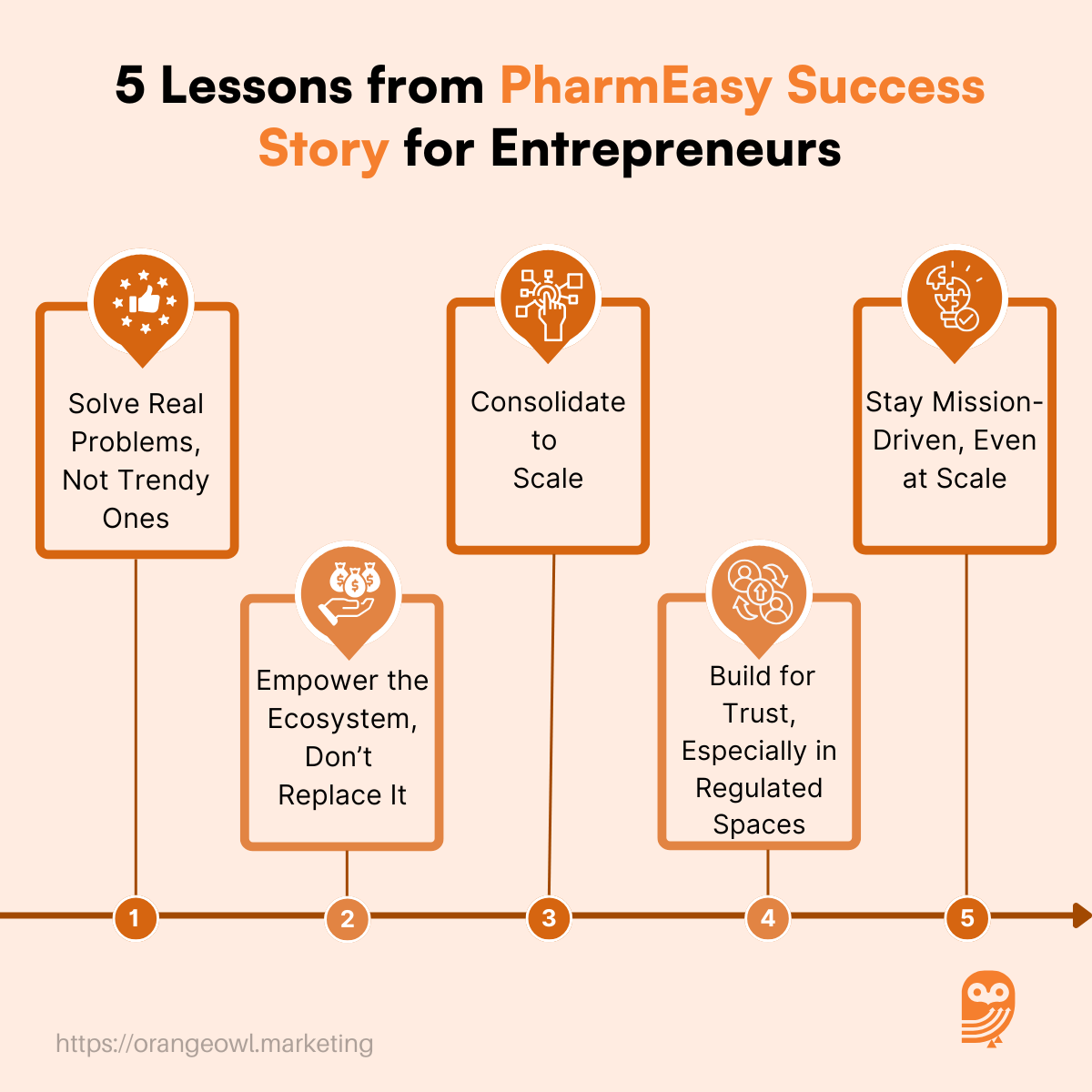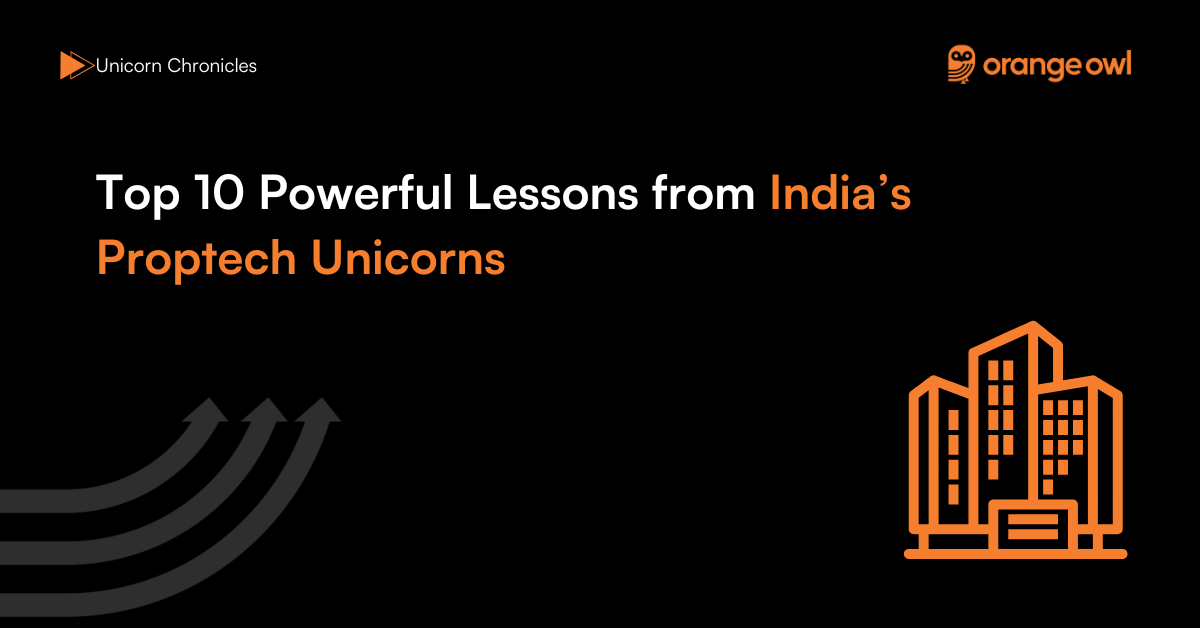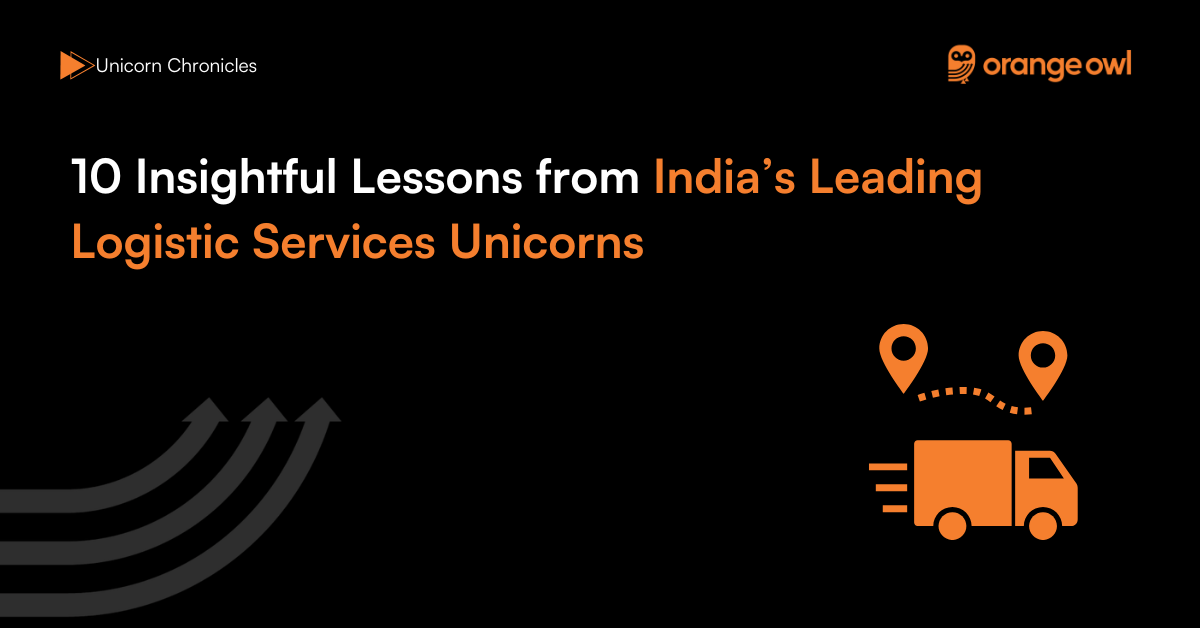PharmEasy Success Story: 5 Insightful Lessons for Every Entrepreneur
Vivek Goel
May 19, 2025

Table of Contents
Introduction
In a country where healthcare accessibility has long been a concern, PharmEasy emerged as a revolutionary force. Founded in 2015 by Dharmil Sheth and Dr. Dhaval Shah, PharmEasy transformed the way Indians access medicines, diagnostics, and telehealth—delivering convenience, affordability, and trust to millions.
What began as a humble medicine delivery app soon scaled into India’s largest e-pharmacy platform. In May 2021, PharmEasy acquired Medlife, another prominent e-pharmacy, consolidating its position in the market. Subsequently, in June 2021, it acquired a 66.1% stake in diagnostics chain Thyrocare for ₹4,546 crore (approximately $600 million), marking the first-ever acquisition of a publicly listed company by an Indian unicorn.Reflecting on their journey, co-founder Dharmil Sheth said:
“We weren’t just trying to sell medicines online—we were solving for access, transparency, and trust in Indian healthcare.”
Backed by investors like Temasek, TPG Growth, and Prosus, PharmEasy achieved a valuation of $5.6 billion in October 2021 after raising $350 million in a pre-IPO funding round. The company claims to connect more than 60,000 brick-and-mortar pharmacies and 4,000 doctors across 16,000 zip codes in India, serving over 20 million customers.
However, the journey wasn’t without challenges. In April 2024, PharmEasy raised $216 million led by Manipal Education and Medical Group (MEMG) and existing investors, but at a significantly reduced valuation of $710 million—a nearly 90% drop from its peak. This decline was attributed to mounting debt obligations, including a $300 million loan from Goldman Sachs, and a broader downturn in the online pharmacy sector post-pandemic.
Despite these setbacks, PharmEasy’s impact on India’s healthcare landscape remains significant. Its innovative approach to integrating technology with healthcare services has set a precedent for future startups aiming to address real-world problems through tech-led solutions.
Origin Story
PharmEasy was born out of a deeply personal pain point. Co-founder Dr. Dhaval Shah, while working in the healthcare industry, witnessed firsthand how difficult it was for patients—particularly the elderly and those with chronic illnesses—to consistently access essential medicines.
Long pharmacy queues, stock shortages, and the physical strain of frequent visits made the process unnecessarily burdensome. Sensing a massive gap in the system, Dr. Shah discussed the issue with his friend Dharmil Sheth, who came from a business background. The duo realized that by blending healthcare knowledge with tech-enabled logistics, they could revolutionize medicine accessibility in India.
With this vision, they launched PharmEasy in 2015. The idea was elegantly simple yet powerful: allow users to upload their prescriptions via a mobile app or website, and deliver medicines from nearby pharmacies to their doorstep. In its earliest form, the platform operated as a basic prescription collection and delivery service in Mumbai, but its mission was clear—ensure timely, compliant, and affordable delivery of prescription drugs without compromising on safety or authenticity.
What truly differentiated PharmEasy from emerging competitors at the time was its unique pharmacy aggregator model. Rather than building massive warehouses or stocking medicines in-house, PharmEasy chose to collaborate with existing local chemists. It acted as a tech enabler, bridging the gap between neighborhood pharmacies and consumers. This meant faster deliveries, stronger last-mile logistics, and better pricing—since it reduced overhead costs significantly.
“We didn’t aim to replace pharmacists—we empowered them with reach and tech,” co-founder Dharmil Sheth emphasized in interviews. This collaborative, partnership-driven mindset became a cornerstone of PharmEasy’s early growth.
Local pharmacies—many of which were struggling to compete with rising e-commerce threats—welcomed the model. By partnering with PharmEasy, they could digitize their operations, expand their customer base, and drive more sales without investing in new infrastructure. As a result, PharmEasy organically built a vast partner network of trusted pharmacies, gaining credibility in a highly sensitive and regulated industry.
This human-first, tech-backed origin positioned PharmEasy not just as an online pharmacy—but as a healthcare accessibility platform that deeply understood the nuances of the Indian market.
Business Landscape and Challenges
When PharmEasy entered the Indian healthcare landscape in 2015, it found itself in a market that was massive in scale but deeply fragmented in structure. The majority of India’s 850,000 pharmacies operated offline, lacked digitized inventories, and served hyperlocal areas with limited technological support. While the opportunity was huge, the sector came with daunting challenges that many startups were unwilling to tackle. PharmEasy chose to go against the grain.
One of the foremost challenges was regulatory compliance. The health-tech sector is one of the most tightly controlled in India, with rigid laws governing the sale and distribution of prescription drugs.
PharmEasy had to build a robust backend system that ensured every prescription was validated, drugs were dispensed only by licensed pharmacists, and orders followed state-specific norms. Any lapse could have jeopardized their credibility and operations. Building this compliance-first culture was non-negotiable and became a key pillar of their reputation.
Another significant barrier was consumer trust. In a country where people still preferred walking down to their trusted neighborhood chemist, the idea of ordering medicines online raised many eyebrows. Concerns over counterfeit drugs, tampered packaging, and delivery accuracy were widespread.
PharmEasy tackled this head-on by partnering only with verified and licensed pharmacies and using tamper-proof packaging to assure customers of product integrity. Their transparent processes and consistent service helped shift consumer perception gradually from doubt to trust.
Logistics presented another mammoth hurdle. Delivering time-sensitive orders—sometimes including emergency medications—through India’s congested urban traffic or in hard-to-reach rural pockets was no easy task.
PharmEasy invested early in optimizing last-mile logistics through local pharmacy networks and real-time tracking systems. They kept fulfillment decentralized, which allowed for faster delivery times and better control over cold-chain and temperature-sensitive products.
Perhaps the most overlooked challenge was digital adoption. In 2015, many users were still unfamiliar with uploading prescriptions via mobile apps or managing medicine refills online. To bridge this gap, PharmEasy had to build an intuitive app interface and invest in educational content and customer support. This ensured that even first-time internet users could confidently place an order.
Despite these multifaceted challenges, the founders remained unfazed. They believed that the more complex and underserved the industry, the more room there was for meaningful innovation.
As co-founder Dr. Dhaval Shah aptly stated, “The more complex the industry, the greater the opportunity to make a meaningful impact.” This clarity of purpose allowed PharmEasy to stay the course and build a company that not only disrupted healthcare but also made it more human, accessible, and trustworthy.
Growth Strategies
PharmEasy’s rise from a local startup to one of India’s most valued health-tech platforms was the result of thoughtful strategy, technological innovation, and a relentless focus on solving real consumer pain points. At the core of their business model was the pharmacy aggregator strategy, which distinguished PharmEasy from traditional e-commerce companies. Instead of investing heavily in warehouses or stocking inventory, PharmEasy built a decentralized network by partnering with local, licensed pharmacies. This asset-light model helped them reduce operational costs, enable faster delivery, and build trust by sourcing medicines from nearby, verified chemists.
One of their most game-changing decisions was the merger with Medlife in 2021, a move that reshaped the Indian e-pharmacy landscape. By joining forces with one of their biggest competitors, PharmEasy not only consolidated market share but also significantly reduced customer acquisition and operational duplication costs. The merger allowed them to serve a larger consumer base with greater efficiency and reach.
But perhaps the boldest move came with the acquisition of Thyrocare—India’s leading diagnostic test provider—for ₹4,546 crore. This was a landmark moment in Indian startup history, marking the first time a startup acquired a publicly listed company. With this acquisition, PharmEasy transitioned from an e-pharmacy to a full-stack digital healthcare platform, now offering everything from medicine delivery to diagnostic tests under one digital roof. This strategic diversification gave them a stronger value proposition and created deeper user engagement across the healthcare lifecycle.
Technology also played a critical role in fueling PharmEasy’s expansion. Their platform integrated AI-driven personalization, auto-refill reminders, easy prescription uploads, order tracking, and seamless diagnostic test bookings. The experience was designed to be intuitive, even for elderly users, reinforcing customer loyalty and convenience.
Geographically, PharmEasy started in Tier I cities but soon expanded to Tier II and Tier III towns. They followed a “local-first” execution strategy, partnering with regional pharmacies and customizing logistics, offers, and support in vernacular languages. “We always believed in creating a network, not owning the entire supply chain,” co-founder Dharmil Sheth explained, emphasizing the scalable and inclusive nature of their approach.
Marketing Strategy
PharmEasy’s marketing strategy was rooted in building trust, relatability, and simplicity—especially for middle-class families, elderly users, and digitally hesitant consumers. They recognized that healthcare is an emotional and sensitive domain, and their branding reflected this understanding. Their campaigns were never flashy or intimidating. Instead, they used humor and empathy, best exemplified in the now-iconic “Take it easy, PharmEasy” jingle. These TV and digital ads humanized the brand and made it more approachable across demographics.
To ensure continued engagement, PharmEasy introduced referral programs, cashback offers, and loyalty points, such as health wallet credits, to encourage repeat purchases. This helped reduce churn and increased their customer lifetime value significantly.
Their regional marketing was another masterstroke. Vernacular ad campaigns tailored for different states helped them penetrate deep into non-metro markets. By speaking the language of their audience—literally and metaphorically—PharmEasy made itself more relatable to a diverse Indian population.
In the age of digital influence, PharmEasy also collaborated with health influencers and doctors to improve brand credibility. These partnerships helped bridge the trust gap and influenced prescription-driven buying behavior, especially among first-time digital users.
During the COVID-19 pandemic, PharmEasy emerged as a crucial healthcare ally. They adapted quickly to the crisis by introducing contactless deliveries, COVID test booking services, and vaccination appointment integrations. Their ability to respond swiftly during a national emergency earned them goodwill and made them a household name.
5 Insightful Lessons for Every Entrepreneur
1. Solve Real Problems, Not Trendy Ones
PharmEasy’s founders didn’t start their journey by chasing the next shiny object in tech. Instead, they focused on a genuine and persistent pain point—access to healthcare in India. By tackling the critical inefficiencies in medicine delivery and diagnostics, they created a solution that had a lasting impact on millions of lives.
This problem-first approach gave them a strong foundation and a clear purpose from day one. As Dharmil Sheth once aptly stated, “India doesn’t need more apps. It needs better solutions.” Entrepreneurs should take note: innovation is only as valuable as the problem it solves.
2. Empower the Ecosystem, Don’t Replace It
Rather than disrupting and displacing the existing pharmacy ecosystem, PharmEasy chose to collaborate. They onboarded local chemists and gave them access to digital tools, thereby extending their reach without disempowering them. This approach created a win-win scenario—customers got convenience and reliability, while pharmacists saw increased sales and digital visibility.
By working with the existing system instead of trying to rebuild it from scratch, PharmEasy built trust, minimized friction, and scaled faster. It’s a valuable lesson for startups in regulated or fragmented industries: empower the stakeholders already in place.
3. Consolidate to Scale
Growth doesn’t always mean doing everything yourself. PharmEasy’s strategic decisions—such as the merger with Medlife and the acquisition of Thyrocare—enabled them to expand both horizontally and vertically. These moves helped them offer a broader healthcare experience, reduced operational redundancies, and fortified their market position.
Importantly, these consolidations were aligned with their mission and didn’t dilute their brand. Entrepreneurs often hesitate to collaborate with competitors or make bold acquisitions, but PharmEasy showed that smart consolidation can accelerate growth while enhancing the user experience.

4. Build for Trust, Especially in Regulated Spaces
Operating in the healthcare sector comes with high stakes. PharmEasy understood early on that compliance, transparency, and authenticity weren’t just legal checkboxes—they were trust-builders. From tamper-proof packaging to working only with verified pharmacies and licensed professionals, every detail was crafted to ensure safety and credibility.
In sectors like health-tech or fintech, where user trust is fragile, businesses must go above and beyond to protect it. PharmEasy’s success underscores the importance of earning and sustaining trust in every interaction.
5. Stay Mission-Driven, Even at Scale
It’s easy for startups to lose sight of their mission once they reach unicorn status or raise massive funding rounds. But PharmEasy stayed true to their original goal: making healthcare accessible and affordable for all Indians. Every product update, partnership, and campaign reinforced that mission.
Their scale didn’t dilute their purpose—it amplified it. As Dhaval Shah emphasized, “Our goal is to make high-quality healthcare a basic right, not a luxury.” For entrepreneurs, this is perhaps the most important lesson of all: let your mission guide every decision, even when success tempts you to drift.
Conclusion: Key Takeaways from PharmEasy’s Journey
PharmEasy’s journey is more than just a case study in startup growth—it’s an inspiring example of solving real-world problems with heart, strategy, and humility. Their evolution from a simple prescription upload platform in Mumbai to a full-stack digital healthcare giant exemplifies the power of purpose-driven innovation. They didn’t just build a successful company—they improved how millions of Indians access critical healthcare services.
Some of the most compelling takeaways from their journey include:
- Partner with the ecosystem instead of trying to disrupt or replace it. Collaboration often unlocks faster and more sustainable growth.
- Prioritize compliance and user trust, especially in sensitive sectors like health-tech. Long-term loyalty is built on integrity.
- Use technology to simplify the user experience—not complicate it. Great products make life easier, not harder.
- Scale with strategy and empathy, ensuring every decision aligns with the company’s mission.
For entrepreneurs in India and around the world, PharmEasy proves that success doesn’t come from shortcuts or hype. It comes from identifying a deep need, building with care, and staying true to your purpose—even as the spotlight grows. As co-founder Dharmil Sheth wisely said, “Building a unicorn is great. But building impact—that’s what really matters.”


